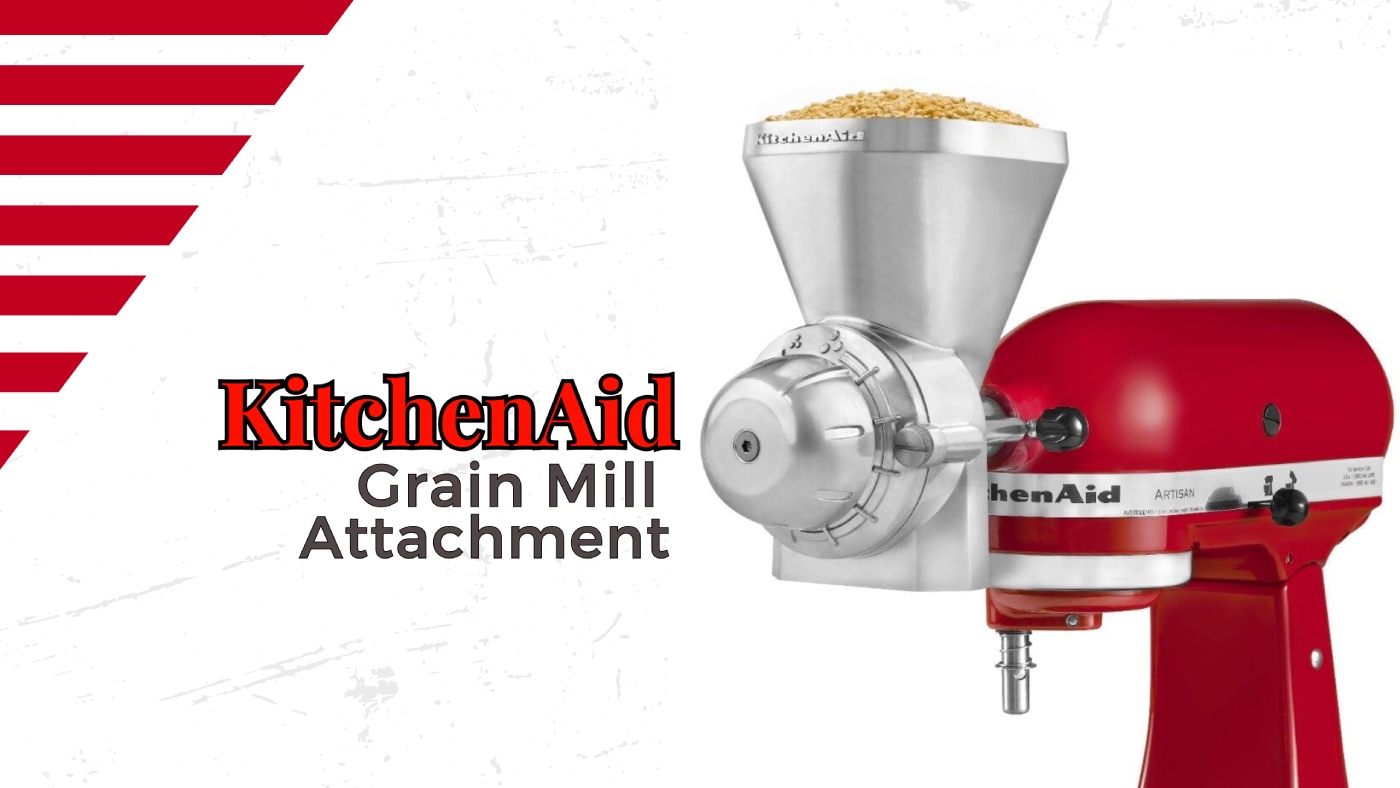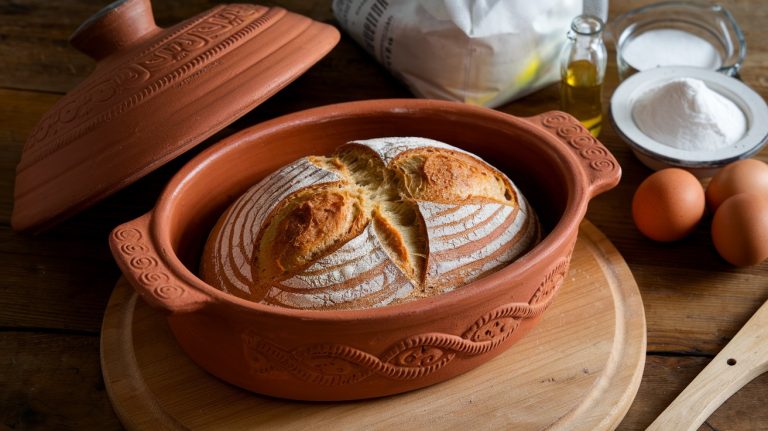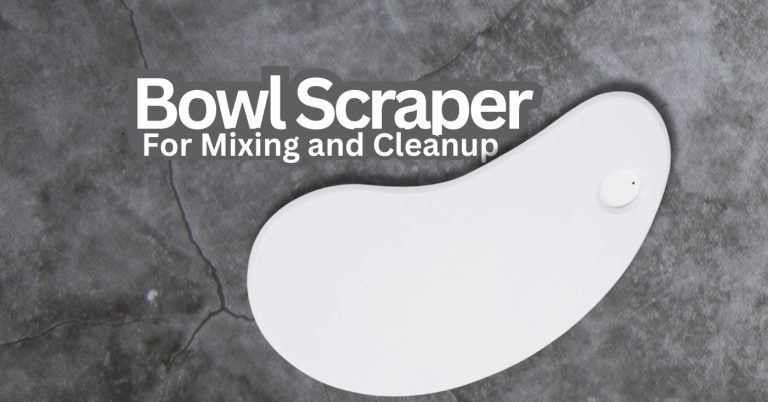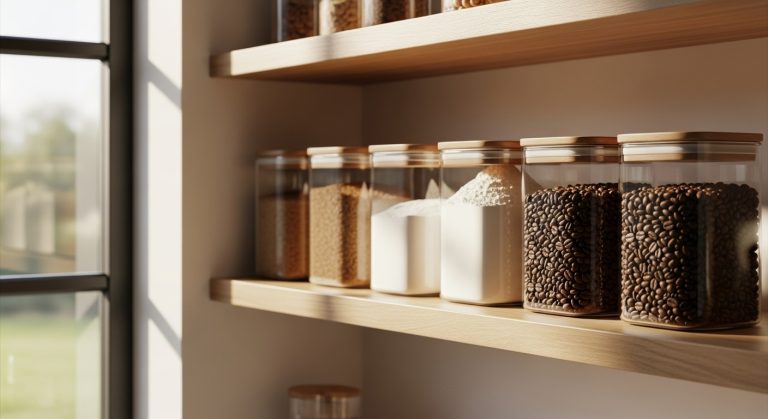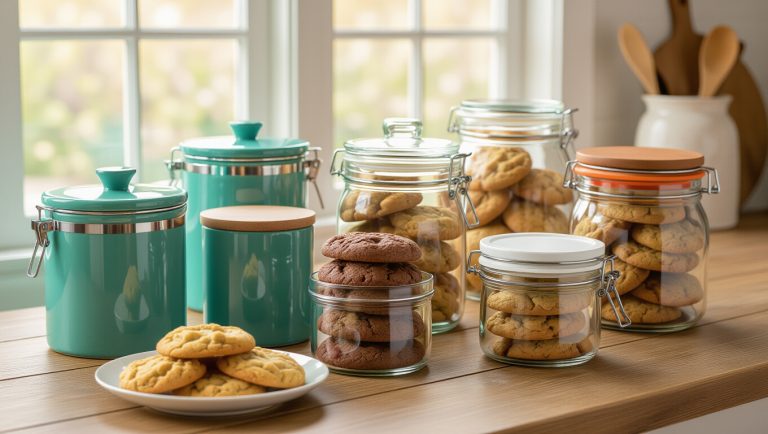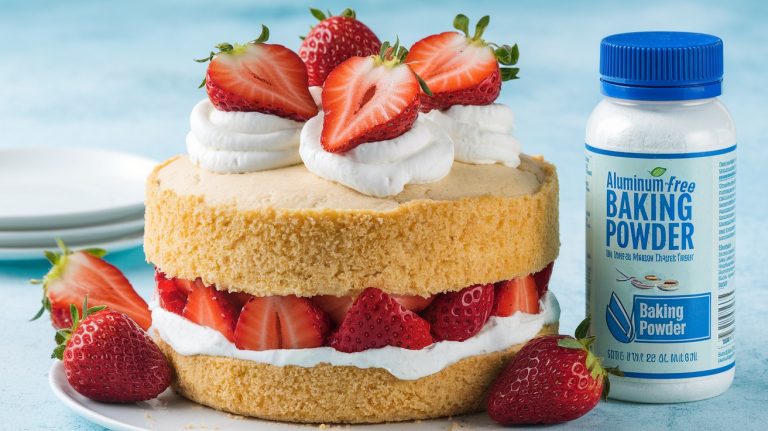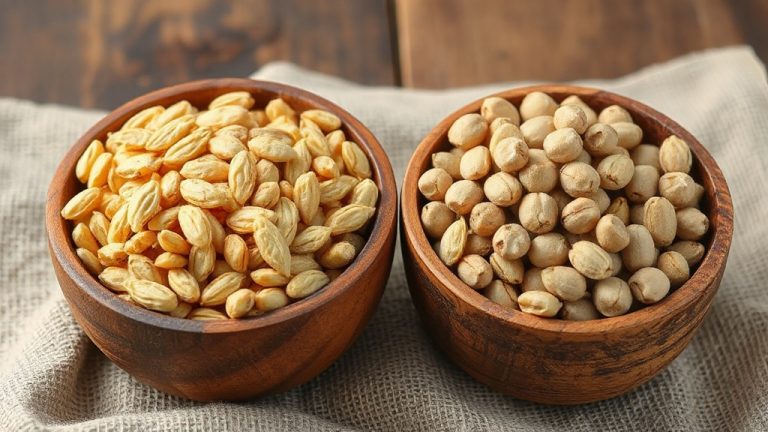Kitchenaid Grain Mill Attachment Review: Home Milling Made Easy
The KitchenAid Grain Mill Attachment is a versatile and durable tool for anyone looking to grind grains at home. It fits all KitchenAid mixers and offers 12 grind settings for personalized texture.
Though it excels with low-moisture grains like wheat and oats, it’s not suitable for oily grains. While it’s easy to install and use, keeping the batch size small is essential to prevent overheating.
Many users appreciate the fresh, nutrient-rich flour it produces, though seasoned bakers might lean toward alternatives. If you’re curious about performance comparisons and user experiences, there’s plenty more to explore.
- Grinds Low-Moisture Grains (Wheat, Corn, Rice, Etc;) From Coarse to Fine
- Model Number :KGM
- Includes a cleaning brush; Fits all household kitchen aid stand mixers
Key Takeaways
- The KitchenAid Grain Mill Attachment features all-metal construction, ensuring durability and compatibility with all KitchenAid Stand Mixers.
- It offers 12 grind levels for customizable texture, making it versatile for various low-moisture grains.
- Users appreciate its ease of use but caution against grinding large batches to prevent overheating and slowness.
- Regular cleaning is essential for maintaining longevity, especially when switching between different grains.
- It serves as an appealing entry-level option for novice bakers, though serious bakers may prefer higher-performance alternatives like Mockmill.
Overview of Key Features
The Kitchenaid Grain Mill Attachment is a powerhouse for home bakers looking to elevate their culinary creations.
This all-metal attachment, compatible with all KitchenAid Stand Mixers, offers 12 grind levels, allowing you to achieve textures ranging from cracked to extra-fine.
Whether you’re grinding wheat, oats, corn, or barley, its efficient design guarantees you can quickly process a variety of low-moisture grains. Additionally, it utilizes the mixer motor for efficient grain milling, further enhancing its performance.
The compact construction makes it easy to handle, while an adjustment knob enables precise settings for your desired consistency.
Plus, it comes with a handy cleaning brush for effortless maintenance.
Installation and Usage Instructions
Equipping your KitchenAid Stand Mixer with the Grain Mill Attachment is a straightforward process that enhances your baking capabilities.
- Grinds Wheat and oats
- Fully adjustable
- All metal construction
Start by turning off and unplugging your mixer. Identify your mixer’s hub type and loosen the attachment knob. Next, insert the attachment shaft into the hub, ensuring the power shaft fits snugly. Align the attachment pin with the hub’s notch and tighten the knob securely. Ensure that the power shaft fits into the square hub socket for proper functionality. The KitchenAid Grain Mill is designed to grind a variety of grains, including wheat and oats, making it versatile for different baking needs.
For assembly, attach the power shaft to the grain mill body and mount the front plate, tightening the screws.
When you’re ready to use it, set your mixer to speed ten and remember to grind no more than ten cups of flour before giving it a break. Always check for foreign objects in the hopper for safety!
Performance Evaluation
When you put the Kitchenaid grain mill attachment to the test, you’ll notice a distinct difference in grind quality compared to other options like the Mockmill.
While it delivers a decent texture for many grains, heat generation can be an issue, especially when grinding finer or larger quantities. One of the benefits of milling grains at home is that freshly milled flour retains vital nutrients and flavors, enhancing your overall baking results.
Grind Quality Comparison
Grind quality plays a crucial role in determining the effectiveness of a grain mill, and the comparison between KitchenAid and Mockmill reveals distinct differences.
KitchenAid offers 12 grind levels, allowing you to customize the texture easily. However, if you’re aiming for finer flour, Mockmill outshines KitchenAid, particularly on its finest setting. Additionally, the KitchenAid attachment is recommended for smaller batches to prevent excessive wear on the unit.
Both models can handle a variety of grains, but Mockmill excels in fine grinding without overheating, making it perfect for larger batches. While KitchenAid is effective for small, occasional use, users often find that Mockmill produces superior results, especially with grains like wheat and rice.
Heat Generation Issues
While both KitchenAid and Mockmill deliver impressive grind quality, heat generation during operation is another key factor to evaluate.
The KitchenAid grain mill attachment utilizes high carbon surgical stainless steel for its milling heads, greatly reducing heat production. Its small 1-inch diameter milling heads minimize leverage and friction, enabling frictionless milling that preserves nutrient integrity. Additionally, the attachment’s durable materials ensure longevity, further supporting its efficient operation.
Users have reported successful long-term operation without notable heat issues, even when milling large quantities of grains like whole corn. Although the mixer may warm during continuous use, no damage has been noted.
Following proper cleaning and assembly guidelines is essential to preventing clogging and ensuring safe operation, allowing you to enjoy consistent performance without overheating concerns.
Safety and Maintenance Tips
To guarantee a safe and efficient experience with your KitchenAid grain mill attachment, it’s crucial to follow specific safety and maintenance guidelines.
Always read the instructions before use and keep the mixer away from water to prevent electrical shock. Supervise children closely during operation, and unplug the mixer when not in use or while cleaning.
For maintenance, hand wash the grain mill with mild detergent and avoid the dishwasher. Clean burrs with the provided brush, ensuring everything is completely dry before reassembly. Additionally, be sure to lightly coat burrs with mineral oil if storing for an extended period.
Check the hopper for foreign objects before grinding, and never exceed 10 cups of flour at once. Regularly inspect for damage, and store properly to keep your attachment in top shape.
Product Specifications
When exploring the KitchenAid grain mill attachment, you’ll find that its compact design and robust construction make it a valuable addition to your kitchen arsenal.
Measuring 21.08 cm in depth and 11.43 cm in width, this die-cast aluminum alloy model weighs just 1.11 kg, making it easy to handle.
It’s compatible with all KitchenAid stand mixers, allowing you to grind a variety of low-moisture grains like wheat, oats, and rice.
With 12 grind levels, you can achieve the perfect texture for your needs.
The attachment includes a cleaning brush for effortless maintenance.
Designed for versatility, it’s not suitable for oily grains, ensuring you get the best results with every use. Additionally, this attachment utilizes mixer motor for efficient grain milling, making it a convenient choice for home bakers.
Comparison With Other Grain Mills
When you compare the KitchenAid grain mill attachment to others like the Mockmill and Nutrimill, you’ll notice significant differences in grind quality and usability. For instance, the Mockmill delivers a finer flour and operates more efficiently, while the KitchenAid may require more effort to set up and clean. Additionally, the Mockmill’s nutritional value is enhanced by its stone grinding mechanism, which retains more nutrients compared to the KitchenAid attachment. Understanding these distinctions can help you choose the best option for your home milling needs.
Grind Quality Differences
Comparing grind quality between the KitchenAid grain mill attachment and other options reveals some notable differences that can impact your baking experience.
While the KitchenAid provides 12 grind levels, including a fine grind, it often generates excessive heat, which can degrade flour quality, especially during high-volume grinding.
In contrast, the Mockmill attachment excels in producing finer flour without the heat issues, making it ideal for serious bakers who need large quantities.
Both attachments handle various grains well, but the Mockmill maintains better efficiency and consistency.
If you’re focused on achieving precise textures for your breads and pastries, the Mockmill may be the superior choice for high-quality flour without the risk of overheating.
Design and Usability Comparison
While evaluating the design and usability of the KitchenAid grain mill attachment, it’s essential to take into account how its features stack up against other popular options.
Unlike the multi-component Mockmill, which allows the bowl to stay in place, the KitchenAid model is a single-piece design, making it compact and easy to use. Made of all-metal, it promises durability. The attachment also utilizes the mixer motor for efficient grain milling, enhancing its performance.
User Experiences and Reviews
User experiences with the KitchenAid grain mill attachment reveal a blend of satisfaction and caution. Many users appreciate its ease of use and versatility, finding it effective for milling small quantities of grains like wheat, oats, and barley.
However, some caution against using it for large batches, as it can be slow and lead to overheating. While first-time users often enjoy the performance, seasoned bakers might prefer alternatives like the Mockmill for finer flour and lower grinding temperatures.
Additionally, users note that the Mockmill utilizes ceramic grinding stones, which enhance durability and performance. Cleaning is essential to maintain the mill’s longevity, especially between different grains. Overall, the KitchenAid attachment is a solid entry point for grain milling, but keep in mind its limitations for extensive or fine grinding tasks.
Frequently Asked Questions
Can I Grind Coffee Beans With the Kitchenaid Grain Mill?
You can’t grind coffee beans with the KitchenAid Grain Mill. The high oil content in coffee can damage the grinding mechanism, leading to potential issues.
Instead, stick to low-moisture grains like wheat or oats, which the mill is specifically designed for. It’s important to follow the manufacturer’s guidelines to guarantee your mill’s longevity and effectiveness.
Is the Attachment Dishwasher Safe for Cleaning?
No, the attachment isn’t dishwasher safe.
You’ll need to hand wash it using mild detergent and warm water. After cleaning, dry it thoroughly with a towel and let it air dry completely.
Avoid immersing the mill in water and make sure the burrs are dry before reassembling to prevent clogs.
For best results, brush the burrs after each use and store them properly to maintain their condition.
What Grains Should I Avoid Grinding?
When it comes to grinding grains, you’ll want to steer clear of high-moisture varieties like wet corn, as they can wreak havoc on your grinder.
Avoid coffee beans, flax seeds, and chia seeds, too, due to their high oil content.
Don’t forget about fibrous materials and unhulled oats, buckwheat, and barley, which can complicate your grinding experience.
Always check manufacturer guidelines to guarantee you’re making the right choices for your grinding adventures!
Can I Use It With Older Kitchenaid Models?
Imagine a timeless bridge connecting generations; that’s your KitchenAid stand mixer.
You can absolutely use attachments with older models, thanks to KitchenAid’s universal power hub. They’ve crafted these attachments to fit securely, regardless of your mixer’s age—except for the Artisan Mini.
With the grain mill attachment, you’ll enjoy grinding various grains effortlessly.
The KitchenAid Grain Mill: Your Baking Ally
To summarize, the KitchenAid grain mill attachment proves to be a versatile companion in your kitchen, transforming whole grains into fresh flour with ease. Its straightforward installation and impressive performance make it a standout choice among grain mills.
While it may not match the power of standalone options, its convenience and compatibility with your KitchenAid mixer can’t be overlooked. You’ll find that embracing homemade flour not only enhances your baking but also elevates your culinary adventures.
- Works with all Household KitchenAid Stand Mixers – Seamlessly connects to any KitchenAid Stand…
- Diverse Grain Options – Effortlessly grinds a variety of non-oily dry grains, including wheat, oats,…
- Precision Grinding with 12 Levels – Offers 12 fineness settings on the adjustable dial, allowing…
Last update on 2025-10-14 / Affiliate links / Images from Amazon Product Advertising API

